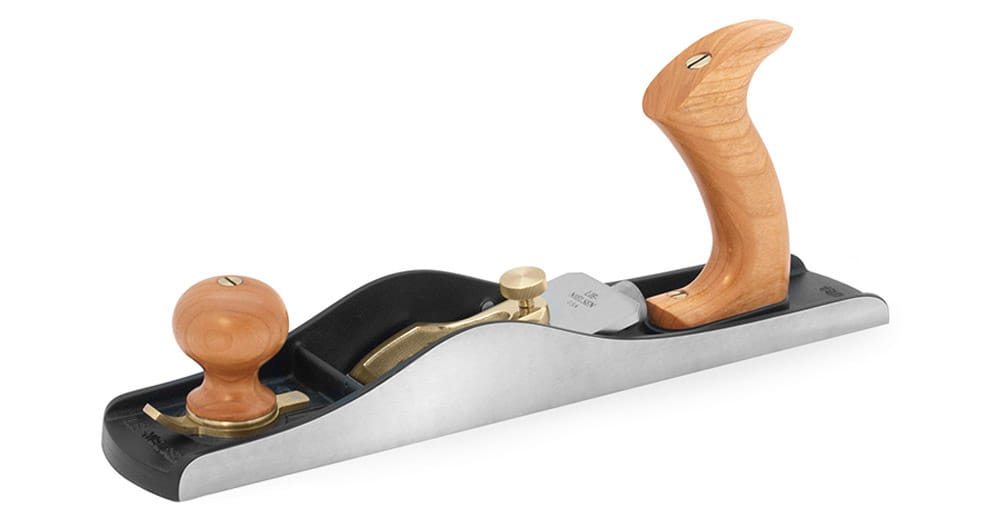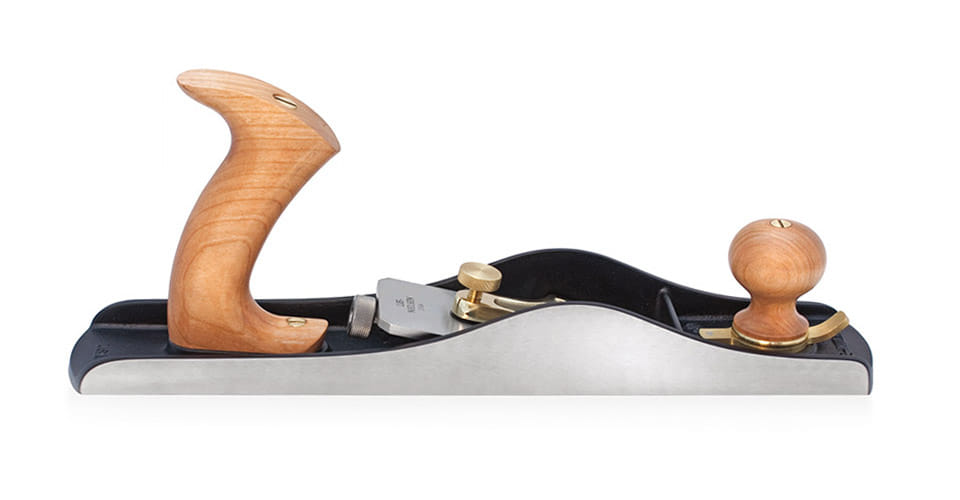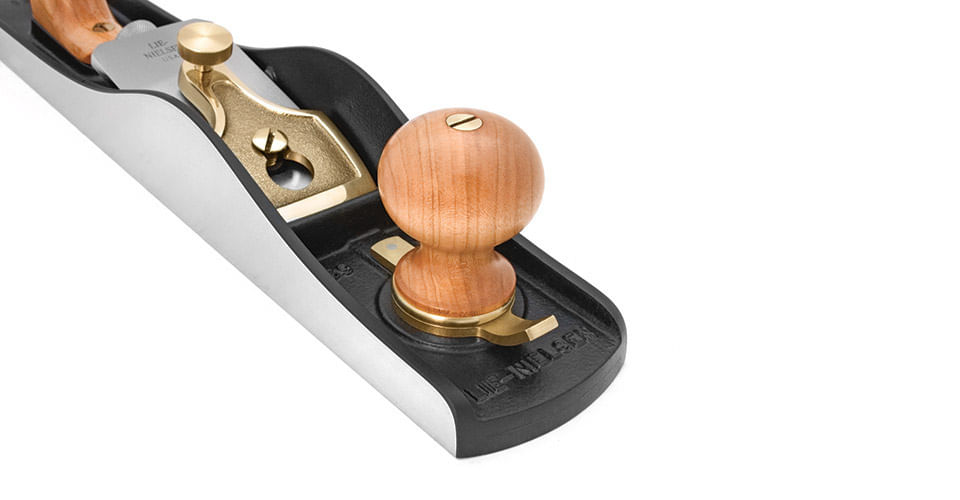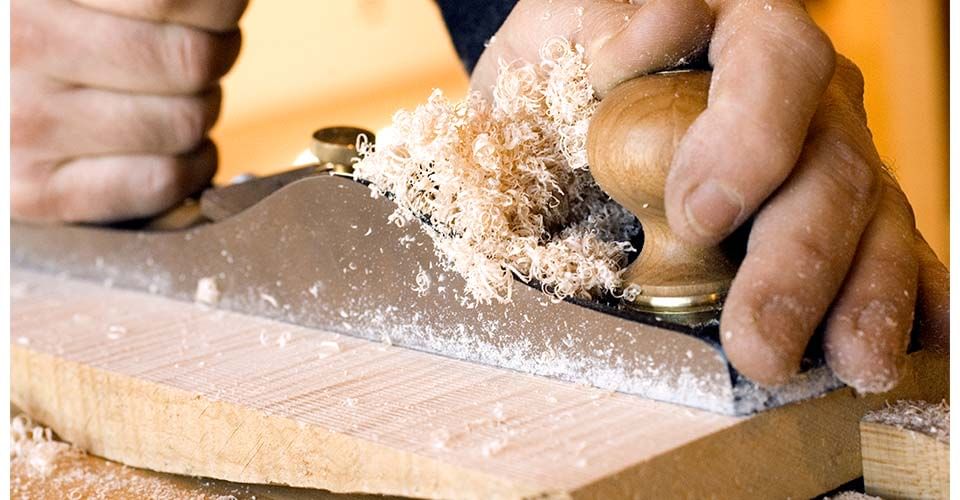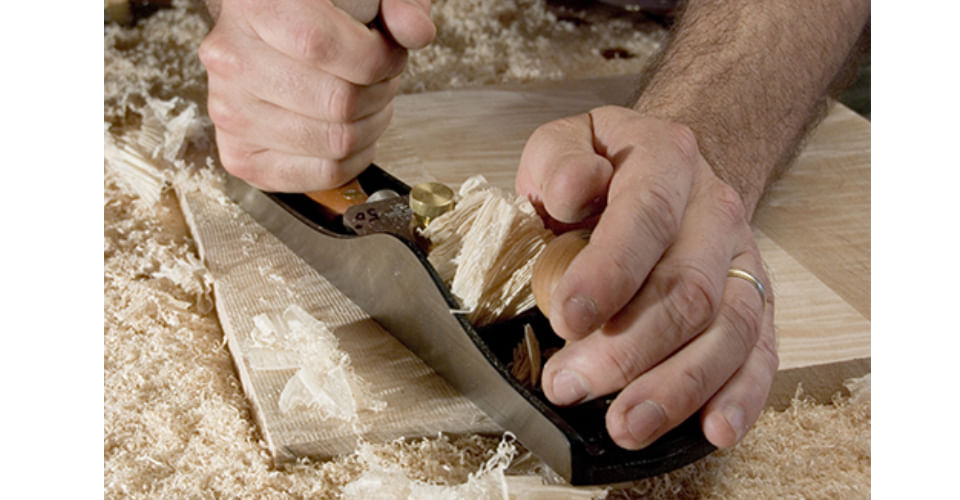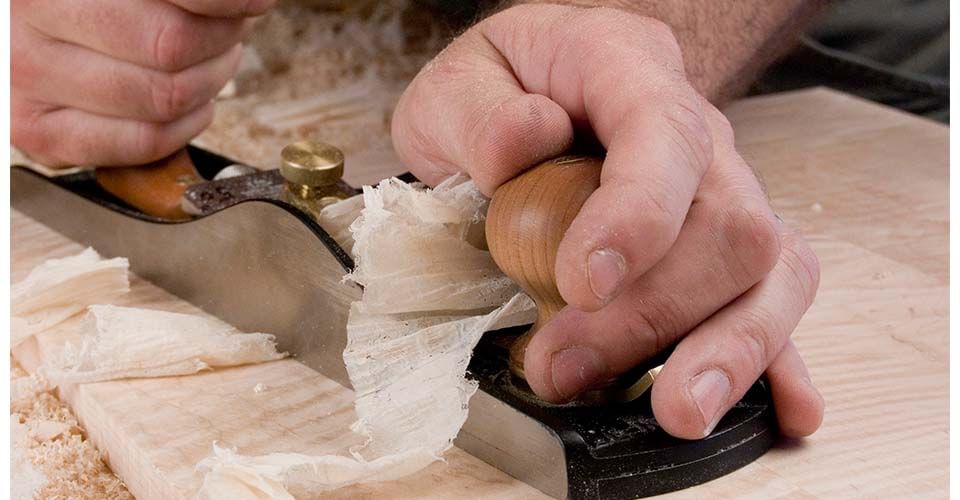No. 62 Low Angle Jack Plane
Patterned after the Stanley No. 62, the Low Angle Jack Plane is one of our most versatile and outstanding planes. The massive blade is set bevel-up in the milled bed at 12°, giving you maximum support of the cutting edge and a low angle of attack. The precise depth adjuster, moveable shoe for adjustment of the mouth opening, and the hefty blade allow you to tackle the most difficult jobs with the power of a Jack or the finesse of a Smoother.
- 14" long.
- Blade is 2" wide x .175" thick, bedded at 12°.
- Iron body, Bronze cap. Weight 4.55 lbs.
The trick to getting the most out of this plane is to have multiple blades honed to different angles for a variety of tasks.
For example: 30° for end grain work, 35° for smoothing, 40° or more for tackling wavy grain with less tear out, a Toothed Blade for aggressive removal of material with less effort, and a 90° Scraper Blade.
Click here to download plans to make your own shooting board.
Make the No. 62 - From Start to Finish
Click here to download a PDF copy of the instructions for this tool.
Low Angle Jack Plane
The Lie-Nielsen Low Angle Jack Plane is based on the Stanley No. 62,
one of the three large format low angle block planes that Stanley made.
At 14" long, the No. 62 was the largest. It was produced between 1905
and 1942*. It is often referred to as a butcher’s block plane, giving you
an idea of one use it was designed for. It features an adjustable mouth
and a 12° blade angle in a full-size bench plane scale. The No. 62 is useful
in a wide variety of jobs, from rough work to smoothing, and our
version with the 3/16" blade and heavy Ductile Iron body is an
outstanding performer.
For the best finishes, use a very sharp blade set to take a fine cut. The
mouth opening should be no larger than necessary to pass the chip.
When you want to cut more aggressively, open the mouth more and
advance the blade for a deeper cut. For best results on end grain, set the
blade and mouth fine.
Geometry:
The blade sits in the body at 12°; it comes with a 25° flat
ground bevel, making the included cutting angle 37°.
Sharpening:
The blade comes ready to use, but honing a secondary bevel
of 5° or 10° will increase performance, help achieve a razor edge quickly, and improve edge life in hardwoods. You can find sharpening
instructions in a printable PDF format here:
Sharpening Instructions PDF
For more information on advanced sharpening we recommend David Charlesworth’s video Plane Sharpening, available in both DVD
and streaming formats.
Blade Adjustment:
Blade adjustment is simple, direct and positive. Hold the tool in one hand with your thumb on the cap. Loosen the cap iron thumbscrew all the way, then tighten slightly until there is a little resistance. Adjust depth of cut with the stainless steel nut. Sight down the base of the tool from the front, and judge depth and squareness of blade by the thin dark line of the blade showing against the sole as it protrudes. When you are done, snug the cap thumbscrew. Do not overtighten. Make sure the mouth is adequately open before advancing the blade to avoid damaging the edge.
Mouth Adjustment:
Hold the tool in one hand and loosen the front
knob about 1/4 turn. Adjust with the brass lever. Tighten the knob again
firmly, but do not overtighten.
Lateral Adjustment:
The Low Angle Jack Plane intentionally has very
little lateral adjustment of the blade. This is an advantage. As you adjust
the blade, it will track squarely with the sole. The disadvantage is that
you must sharpen the blade square. We recommend using our Honing Guide to make this easier to do. If you find that you don’t like this
feature, you can grind the blade narrower to give more lateral play.
*John Walter, Antique and Collectible Stanley Tools: Guide to Identity and Value, Second Edition, The Tool Merchant, 1996.
Materials:
The body is cast from Ductile Iron, a very strong alloy that
will take a lot of abuse. These castings are fully stress-relieved, a process
that removes inherent stresses and ensures that the tool will remain
flat and true. The cap is Manganese Bronze. Other parts are Brass, Steel
and Cherry.
The blade is 3/16" A2 cryogenically treated Tool Steel, double tempered
to Rockwell 60-62. Our heat treating technique ensures that the blade
will take and hold a very fine edge for a long time. After heat treating,
the blade is fully surface ground on the top, back, and cutting edge,
giving a smooth, flat surface that will take a mirror finish very quickly.
The thick blade provides solid chatter-free cutting.
Maintenance:
The sole is ground flat to .0015" or less. Occasional hand
lapping with fine wet/dry sandpaper (320 grit or higher) on a flat surface
like a glass plate, will help remove dings and keep it true. The cap iron
can be polished with any good brass polish, or allowed to patina with
age and use. Occasionally, the tool should be disassembled, cleaned, and
moving parts oiled. The blade should be kept lightly oiled to prevent
rust, especially when the tool is not in use. We recommend Jojoba Oil, a plant based oil product that is non-toxic, odor-free and easy to use. Also, in our shop, we use a fine abrasive handblock to remove any light surface oxide from tool bodies and blades. Jojoba Oil and abrasive handblocks are available from us.
Find everything you need for tool care.
Guarantee:
Materials and workmanship are guaranteed for the life of your tool. Call for repairs or replacement parts. We are available for advice if you ever have a problem using your tool.
Proposition 65 Notice:
Bronze and brass alloys contain lead, a chemical known to the State of California to cause cancer and birth defects, or other reproductive harm. Wash hands after handling.

